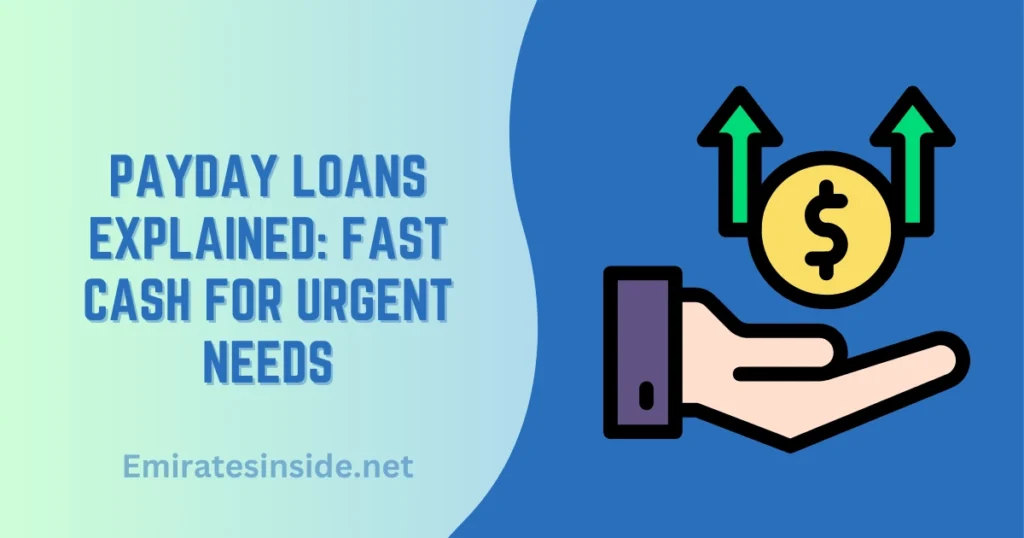Payday Loans Explained: Fast Cash for Urgent Needs
In the unpredictable landscape of personal finance, sudden expenses can arise at any time. This is where payday loans often come into the picture, offering a possible solution for those who require immediate funds until their next paycheck. But what exactly are payday loans, and how do they operate within the broader context of emergency financial assistance? In this post, we’ll delve into the details of payday loans, exploring their utility, benefits, and potential drawbacks.

Understanding Payday Loans
Payday loans are short-term, high-interest loans typically intended to cover unexpected expenses until the borrower’s next payday. They are often used for emergency situations like medical expenses, car repairs, or other urgent bills. The process of acquiring a payday loan can often be quicker than other types of loans. Lenders typically do not perform extensive credit checks, making payday loans accessible to individuals with less-than-perfect credit scores.
How Payday Loans Work
The application procedure for a payday loan is relatively straightforward. Borrowers apply either online or in person, providing proof of income and a bank account. The loan is usually approved quickly, sometimes within minutes, and funds are deposited into the borrower’s bank account soon after. Repayment often coincides with the borrower’s next payday, typically within two to four weeks from the date the loan was issued.
The Benefits of Payday Loans
The primary advantage of payday loans is their speed and convenience. For those facing urgent financial needs, the ability to access cash quickly without undergoing a rigorous credit check is a significant benefit. Additionally, because the repayment term is short, borrowers may pay off their loan promptly, avoiding long-term debt.
Potential Drawbacks to Consider
Despite their benefits, payday loans come with notable drawbacks. The most significant of these is the high-interest rates associated with the loans. Annual percentage rates (APRs) can reach three digits, making the cost of borrowing expensive. This can lead to a cycle of debt if a borrower is unable to repay the loan on time, forcing them to take out additional loans to cover the initial, and the accumulating, expenses.
Responsible Use of Payday Loans
To avoid the pitfalls associated with payday loans, it is crucial for borrowers to assess their financial situation and ensure they genuinely need the loan for specific urgent requirements. Borrowers should carefully read the terms and conditions, including the APR and repayment period. Setting a budget and ensuring that the loan can be repaid out of the next paycheck is essential to prevent further financial strain.
Alternatives to Payday Loans
Individuals considering payday loans might also explore other options. Personal loans from banks or credit unions, for example, might offer better interest rates and payment terms, albeit requiring a more thorough credit history check. Additionally, some employers offer salary advances or hardship loans to employees in need. Exploring community resources like credit counseling services can also provide guidance and support.
Conclusion
Payday loans represent a double-edged sword; they offer the ability to manage sudden and unavoidable expenses but come with high costs that may exacerbate financial troubles. By understanding their function, benefits, and risks, borrowers can make informed decisions that best suit their needs. It is always wise to consider all financial options and seek expert advice before committing to any form of high-interest borrowing.




